Does your pup act like they have to guard food like it's a life-or-death situation? Food aggression in dogs is more common than you might think, and it can show up in even the sweetest furry friends.
Some pups growl or snap around food like they're protecting a secret recipe. Others may hover over food and scarf it down almost instantly without letting anyone near. This type of aggression can be targeted at other dogs or humans. Sounds familiar?
Keep reading because we're breaking down the why, the how, and most importantly, the what now of this tricky behavior. You'll find helpful tips, cool facts, and smart ways to handle it.
What Is Dog Food Aggression?

Food aggression happens when a dog guards food or snacks as if it were the last meal on Earth. You might see growling, stiff posture, or even a dog snapping to keep others away. It's one form of aggression in dogs that pet parents should not ignore.
Defining Resource Guarding Behavior in Dogs
Resource guarding happens when a dog protects something they see as valuable. This could be their dog food, treats, table scraps, or even food from the trash. Guarding behavior shows up as stiff body language, growling, barking, nipping, or moving between the object and the approaching person or other animals.
A resource-guarding dog is not trying to be mean. They're just reacting based on natural instincts to keep their food source safe.
Is Food Aggression Normal or a Behavioral Issue?
Food aggression can be part of normal dog behavior, especially in young pups or shelter dogs. Still, when aggressive behavior starts causing problems at feeding times or puts other dogs or people at risk, it becomes a severe problem.
Think of it as a learned response to feeling unsafe or threatened. Helping your dog stop food aggression takes patience, not punishment.
Different Forms of Food Aggression
Food aggression doesn't always look the same. Some dogs get snappy with other dogs, while others guard their food bowl from people. A few will growl at anyone walking too close to the dinner table. These next sections break it down so you can spot the difference fast.
Dog-to-Dog Food Aggression at Mealtime
When two or more dogs share a space, things can heat up at feeding times. One dog eats calmly, while the other guards their food bowl like buried treasure. You might see aggressive behavior like growling, stiff posture, or even biting. This kind of food aggression often shows up when dogs feel the need to protect their meals from other animals. Keeping a separate room for feeding can help reduce the risk and keep the peace.
Dog-to-Human Food Aggression While Feeding
Some pups act like their food dish is off-limits to humans. They may growl, freeze, or even snap if a person gets too close to their dog's food bowl. This guarding behavior is usually driven by natural instincts and a fear of someone taking their meals away.
It's important to spot subtle signs early. Pet parents should avoid punishing the dog and instead focus on training with a certified dog trainer to stop food aggression.
Common Causes of Dog Food Aggression
There's no single reason for dog food aggression, but many behaviors come from past experiences, instincts, or physical issues. Once you know what’s causing the problem, you can take steps that actually help improve your dog’s behavior.
History of Food Insecurity or Competition
Dogs that once struggled to get enough to eat may still act like they need to guard every bite. This can happen to rescued animals, strays, or dogs that have to compete with other dogs for scraps. That old scarcity fear can stick around.
So, even with regular meals, they may still show food guarding or aggressive signs. Helping your best friend feel secure around food is the first step toward change.
Instinctual Guarding Behavior From Puppyhood
Puppies learn fast, especially when it comes to food. If a young dog feels like their meal might disappear, they can grow up showing guarding behavior. That includes standing over the food bowl, growling, or pushing other animals away. These habits are built from natural instincts and can carry into adulthood. Watching for subtle signs early can help stop patterns before they turn into food aggression.
Medical Conditions That Trigger Increased Appetite
Sometimes, the issue isn't emotional at all. It might be physical.
- Certain meds can increase hunger
- Health issues like diabetes or thyroid problems may cause sudden food obsession
- Older dogs may show changes due to age-related conditions
- Hormone imbalances can affect behavior and eating habits
When a dog's food aggression shows up suddenly, a vet visit is a smart move. Ruling out physical causes can help guide your next stage of care.
Warning Signs of Food Aggression
Food aggression rarely comes out of nowhere. Most dogs give plenty of warning before things get serious. Here are the signs that let you know a dog feels uneasy or threatened during meals.
- Growling, Snapping, or Lunging During Meals. These are loud and clear red flags. If your dog growls or snaps while eating, they may be trying to keep other dogs, people, or approaching persons away from their food dish.
- Guarding the Bowl or Freezing Over Food. A dog's food aggression often starts with guarding. You might see them stiffen or plant themselves in front of the food bowl, watching everyone like a hawk.
- Tense Posture, Whale Eye, or Raised Hackles. These are the quiet signs before a blow-up. The dog's behavior may shift with rigid body language, wide eyes showing white, and the hair on their back standing up.
-
Stealing Food, Eating Quickly, or Not Allowing Others to Eat
Some dogs rush through meals or try to snatch food from others, acting like every bite is a competition. These behaviors can signal growing insecurity and developing food aggression.
Why It's Important to Address Food Aggression
Food aggression in dogs can turn a quiet dinner into a stressful showdown. If left alone, this aggressive behavior can lead to biting, tension at feeding times, or even a severe problem. Helping your dog feel safe while eating protects everyone and builds trust.
Safety Concerns for People and Other Pets
When a dog growls, snaps, or guards their food bowl, there's real risk involved. Pet parents, kids, or other dogs could get hurt by accident. A resource guarding dog may not mean harm, but their instinct to guard food can create dangerous moments fast. Keeping everyone safe means acting early and using positive training methods.
Anxiety and Stress Associated With Feeding Time
Feeding times should be relaxing, not a stressful experience. But food guarding turns meals into high-tension moments. Some dogs show subtle signs of worry, like stiff posture or avoiding eye contact. Others may stop eating if they feel watched or threatened.
Helping your pup feel calm can reduce anxiety and turn the food dish back into a happy place. Sometimes, small changes like hand feeding or using a separate room make all the difference.
Implement Training for Dog Food Aggression
One of the best ways to stop this behavior is to implement food aggression training. Start small with easy cues like sit, wait, or leave it. Reward relaxed behavior at the food bowl with their favorite tasty snacks. Keep adding small challenges as your dog builds confidence. For tougher cases, you may want to work with a certified dog trainer who understands resource guarding.
Establish a Predictable Feeding Routine
Feeding times should feel safe and steady. When a dog eats on a regular schedule, it builds trust and lowers stress. Stick to a routine with measured meals and limit random snacks from the dinner table or trash bags. This steady rhythm helps ease food-related tension and reduces aggressive behavior during mealtime.
Feed in a Quiet, Distraction-Free Space
A noisy room can turn mealtime into a mess. Choose a calm area away from foot traffic where your dog feels less threatened. Occasional hand feeding can build trust and break the cycle of food guarding. This approach works especially well for dogs that show aggression in dogs only toward people.
Separate Dogs During Meals
Got more than one pup? Use a separate room or space for each one during meals. This helps prevent dog-to-dog food aggression and lowers the chance of a fight breaking out over a food bowl. Feeding dogs apart gives each pup space to relax and eat without tension.
Try Slow Feeders or Puzzle Bowls
Some dogs act aggressively because they eat too fast. A puzzle feeder or slow bowl makes them slow down and focus. This taps into natural instincts and turns feeding into a brain game. These bowls can help reduce food bowl aggression and promote a calmer eating experience.
Don't Punish Food Aggression
Punishment can make a dog's food aggression worse. If a dog feels scared or confused, they may become more defensive. Instead, use calm training and rewards to teach better responses. A harsh reaction can break trust and fuel more aggression.
Consider CBD or Calming Aids to Ease Aggression

Some dogs could use some extra help settling down at mealtime. Natural calming aids, like CBD, may support mood balance and ease food aggression during feedings. CBD works with your dog's endocannabinoid system to regulate stress and aggressive behavior without making them sleepy or changing their personality.
- CBD Calming Chews. These soft bites mix CBD with chamomile, L-tryptophan, and other calming herbs. Great for dogs that get worked up during meals. They also taste like peanut butter and sweet potato, which is a major win for canine foodies.
- CBD Wellness Dog Treats. These treats promote everyday balance. Made with CBD, blueberries, flax seeds, and hemp seed powder, they support digestion, mood, and overall wellness. An ideal option for dogs who seem edgy or uneasy around the food dish.
All HolistaPet CBD products are made with broad spectrum hemp extract and contain zero THC. You get the soothing benefits without any unwanted side effects.
Consult a Professional Behaviorist
If your dog's behavior feels overwhelming, it's time to bring in an expert. A certified dog trainer or behaviorist can pinpoint the cause and create a custom plan. This is especially helpful if your dog growls, lunges, or shows signs of a severe problem. A personalized approach can turn stressful feeding times into calm, safe routines.
When to Consult a Professional Trainer or Behaviorist
Sometimes, food aggression in dogs needs more than at-home help. If your pup's reactions seem extreme or risky, it's smart to bring in a pro.
- Dog Growls or Snaps Without Warning. Sudden or intense aggressive behavior puts people and other animals at risk.
- Attempts to Bite During Feeding Times. This is a sign of a severe problem that needs expert guidance fast.
- No Progress With Basic Training. If you're seeing no change, even after trying routines and rewards, a certified dog trainer can make a big difference.
- Guarding Other Resources Beyond Food. A resource-guarding dog might also protect toys or spots on the couch, signaling a deeper issue.
Final Thoughts – Dog Food Aggression
Food aggression can feel frustrating, but it's not the end of the story. With patience, love, and the right support, you can help your best friend feel calm and safe again. Watch for subtle signs, feed in a low-stress spot, and stick to your training plan.
Sometimes, natural products like HolistaPet's CBD calming chews or wellness treats may help take the edge off during feeding times. They're gentle, tasty, and crafted just for dogs. HolistaPet also has amazing care options for cats too. From daily meals to special treats, your pet deserves to eat in peace, without stress, snapping, or side-eye at the food bowl.

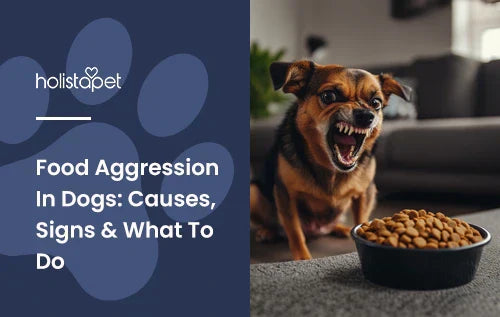
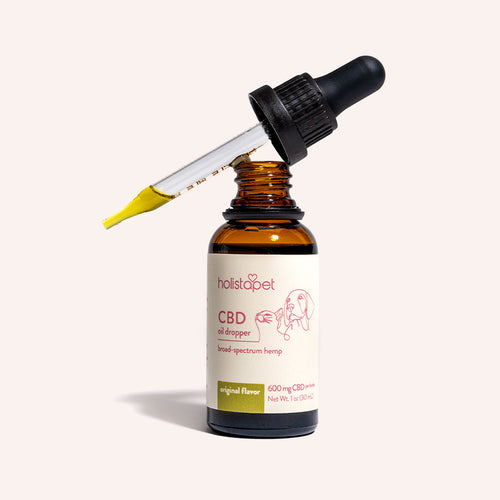 CBD Oil for Dogs - Fast Acting
CBD Oil for Dogs - Fast Acting
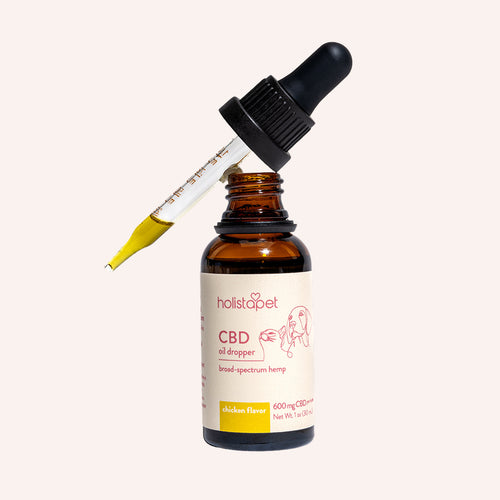 Chicken Flavored CBD Oil For Dogs - Easy Dose
Chicken Flavored CBD Oil For Dogs - Easy Dose
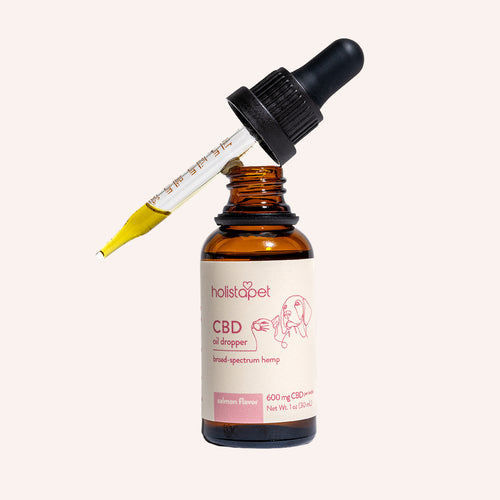 Salmon Flavored CBD Oil For Dogs - Highly Rated
Salmon Flavored CBD Oil For Dogs - Highly Rated
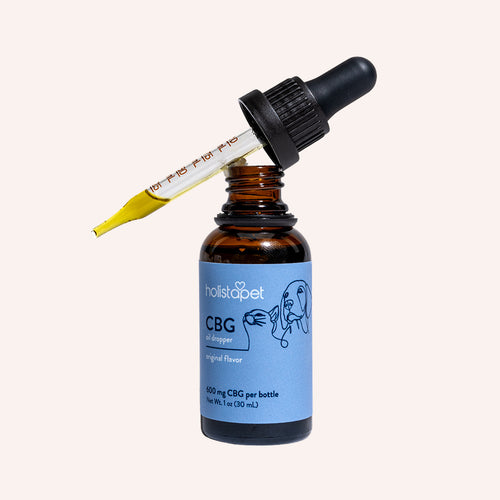 CBG Oil for Dogs and Cats - Loved by Thousands
CBG Oil for Dogs and Cats - Loved by Thousands


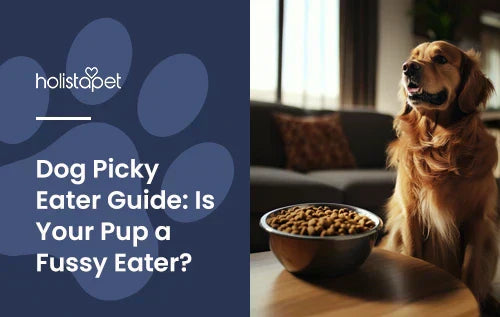
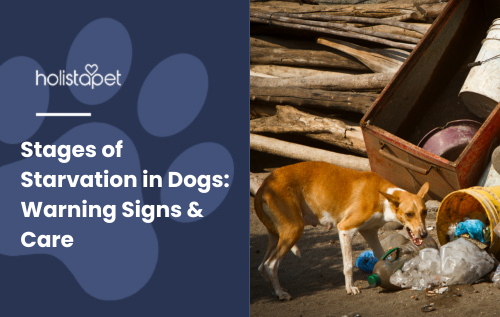

Leave a comment
All comments are moderated before being published.
This site is protected by hCaptcha and the hCaptcha Privacy Policy and Terms of Service apply.